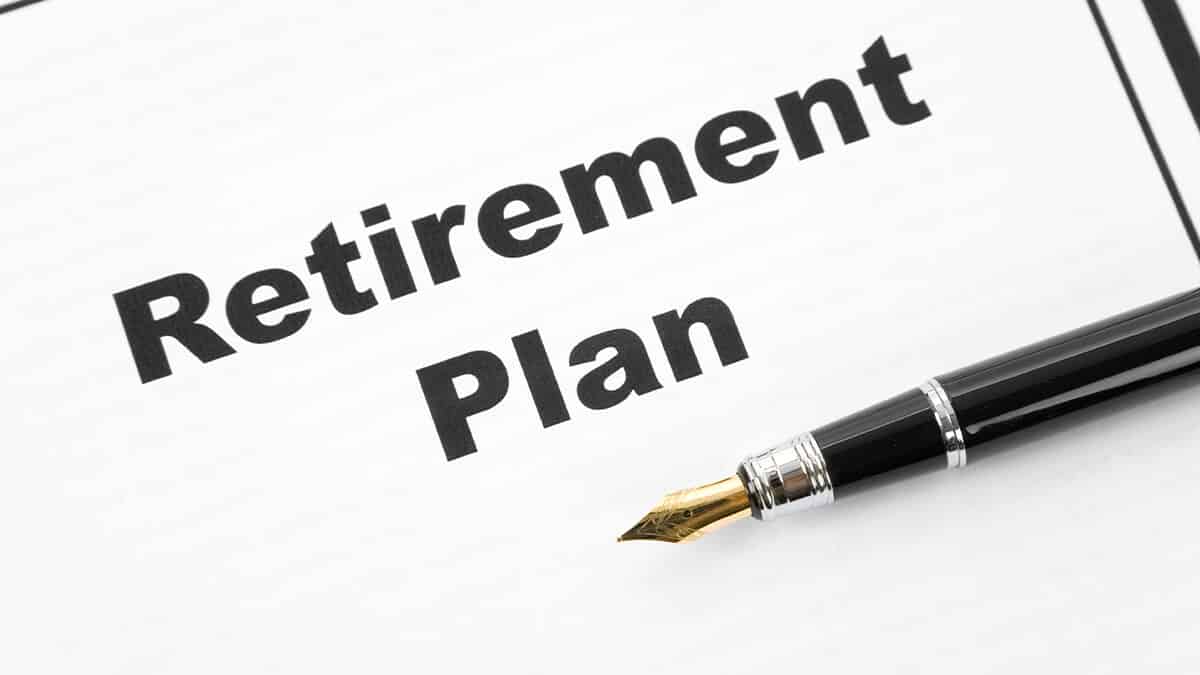In this guide
When you’re still in the workforce, the idea of retirement conjures an image of one long holiday doing whatever you want, whenever you want – finances permitting.
For most people, however, the reality of retirement is a little different. The typical retirement consists of several phases, each with its own spending pattern. Some phases involve more spending, some less.
If you want to create a successful retirement plan, the first step is to get a realistic idea of how your retirement years might unfold, so you can ensure you have enough money to support yourself for the duration.
Just as important, however, is coming to grips with how much you’re likely to spend during each retirement phase, so you can set a sensible budget for your spending.
Understanding your retirement years
For most Aussies, retirement generally progresses through three distinct stages. These periods are based on your health and the type of activities you pursue as you age. Your spending pattern in each stage reflects this.
Although we’re all different, a simple way to think about your retirement is to view it as being broken into:

Free eBook
Retirement planning for beginners
Our easy-to-follow guide walks you through the fundamentals, giving you the confidence to start your own retirement plans.
"*" indicates required fields
Stage 1: The active years
In the early years, you will generally have the same physical capabilities you had in the latter years of your working life. You will have more free time in retirement, so if you are still fit and healthy, plan to spend more money on leisure activities and less on work-related expenses.
This phase often involves more time for hobbies, entertainment, overseas or local travel, home renovation, volunteering and caring for grandchildren. Increasingly, some active retirees choose to continue working or consulting part-time.
Realistically, depending on your health and fitness, this phase could last 10 years or more.
Stage 2: The sedentary years
As you slow down physically, your lifestyle often slows down. This generally means your spending falls as well.
In this phase, you might downsize into a smaller home if you haven’t already done so, travel closer to home and spend more on health. You may also start thinking about aged care and fine-tuning your estate plan.
Stage 3: The frail years
In later life, we can become increasingly frail and dependent on help to get around. Restricted mobility means your leisure activities tend to be limited and your health costs often increase.
Many retirees in this stage need help around the home and in their daily activities. You may choose to fund home-based care to allow you to stay in your own home for as long as possible or move into a residential aged care facility. While aged care accommodation is subsidised by the government on a means-tested basis, the costs can be substantial for self-funded retirees and need careful planning.
What does this mean for my retirement budget?
As you approach retirement, understanding these three stages and how long each is likely to last may help you work out your likely expenditure and how much super you will need to pay for it.
2026 SMSF calendar
Our free calendar includes due dates for important documents plus suggested dates for trustee meetings and other strategic issues for your SMSF.
"*" indicates required fields
Many pre-retirees assume they will need a constant level of income, indexed to the Consumer Price Index (CPI) to cover inflation – a straight line that gently slopes upwards. But that’s unlikely to be the case.
Many Australian financial experts argue that retirement spending tends to be more like a lop-sided smile – higher spending at both ends (albeit not quite as high in frail old age), with lower outlays in the middle. The increased expenditure in your late retirement is due to increased medical and aged care expenses, rather than more consumption and holidays.
It’s important to note that even with this higher spending in the early and late stages of your retirement, you are still likely to spend less than you did when you were working.
As the Grattan Institute noted in its Money in Retirement: More Than Enough report, “Australians tend to spend less after they retire, and even less into old age. While their medical costs increased, these are largely borne by the taxpayer. Many retirees are net savers, and current retirees often leave a legacy almost as large as their nest egg on the day they retired.”
Typical spending pattern over your retirement years

How can I budget for my frail years?
Although you can’t predict your future health care needs or how much you will need to spend on home care and support services in your later years, there is a useful tool you can use to estimate spending in later life.
Many pre-retirees are familiar with the Association of Superannuation Funds of Australia (ASFA) Retirement Standard, which estimates the annual expenditure of retirees enjoying either a ‘comfortable’ or a ‘modest’ standard of living.
While ASFA’s primary Retirement Standard estimates the spending of retirees aged 65 to 84, it also provides household budgets for retirees aged 85 and over.
This second budget includes costs such as assistance in the home (cleaning services, meals and the like), increased out-of-pocket expenses for major medical procedures and ongoing medicines and other health expenses.

Free eBook
Beginners guide to the Age Pension
Learn how the Age Pension is assessed, and how to apply.
"*" indicates required fields
As noted earlier, for most retirees, these expenses become an increasingly important component in their annual spending. In contrast, spending on travel and leisure activities tends to decline in this phase of retirement.
ASFA Retirement Standard budget for households aged 65–84 (March quarter 2025)
| Comfortable | Modest | Age Pension | |
|---|---|---|---|
| Single | $52,383 | $33,386 | $29,874 |
| Couple | $73,875 | $48,184 | $45,037 |
ASFA Retirement Standard budget for households aged around 85+ (March quarter 2025)
| Comfortable | Modest | Age Pension | |
|---|---|---|---|
| Single | $49,555 | $31,273 | $29,874 |
| Couple | $68,542 | $44,775 | $45,037 |
As you can see from the tables above, the Age Pension doesn’t stretch to a modest budget, let alone a comfortable lifestyle, so superannuation and other sources of income will be needed to supplement any Age Pension entitlements.
While ASFA’s budget estimates help you understand how much money you may need to fund your retirement, translating that into how much you should withdraw from your super each year is another challenge.
How much can I afford to spend in retirement?
Fear of running out of money and a reluctance to seek financial advice means many people withdraw the minimum amount required from their super account-based pension.
There have been many attempts to create a simple rule of thumb to help people estimate the amount of retirement income they should aim for, although most have been developed overseas.
Learn more about retirement income rules of thumb.
That led the Actuaries Institute to conduct a study for Australian conditions, focusing initially on single homeowners who have reached Age Pension age and receive a full or part-Age Pension in addition to an account-based pension from their super fund.
After testing for retirees of different ages and levels of assets, they calculated optimal drawdown rates from age 67 to 110. They were able to produce a simple, easy-to-communicate rule of thumb.
Start planning your retirement – for free

Access clear, independent guidance and tools that make it easier to plan with confidence and take control of your future with a free SuperGuide account.
Find out moreHere’s what they found:
- A single retiree should draw down a percentage that is the first digit of their age. For example, if you are 72, you withdraw 7% of your account-based pension
- Add 2% if your account balance is between the Age Pension assets test thresholds.
The above rule is subject to meeting the statutory minimum drawdown rule.
A retiree with the same balance in their 70s would draw down 9% of their savings under the rule of thumb, while someone in their 80s would draw down 10%.
This compares with the current statutory minimum drawdown rates in the table below.
| Age | Minimum withdrawal rate | Rule of thumb |
|---|---|---|
| Under 65 | 4% | – |
| 65–74 | 5% | 6% (7% from age 70) |
| 75–79 | 6% | 7% |
| 80–84 | 7% | 8% |
| 85–89 | 9% | – |
| 90–94 | 11% | – |
| 95+ | 14% | – |
As you can see from the table, a person following the actuaries’ simple rule of thumb would withdraw more money than the statutory minimum up until age 84, when they are likely to be most active and need extra cash. Once they turn 85, they would be required under the current rules to withdraw more than the rule of thumb.
“The optimal drawdown rates are severely impacted by the Age Pension assets test. If you are under the assets test range, for every $1,000 of your account-based pension you spend, the following year your income (from the Age Pension) is likely to increase by 7.8% because the taper rate in the assets test is so high,” says one of the study’s authors, John De Ravin.
In other words, by spending more early in retirement, some retirees will be able to have their cake and eat it too.
“By the time they reach 85, they will have less left in their account-based pension than if they had stuck to the statutory minimum, but there is so much enjoyment of life to be had between the ages of 67 and 85. Expenditure also tends to decline as you age anyway, so we think (the rule of thumb) is a good trade-off.”



Leave a Reply
You must be logged in to post a comment.